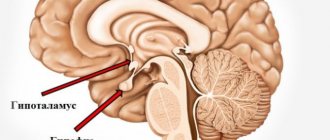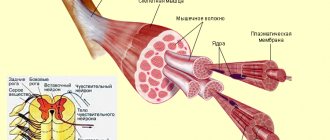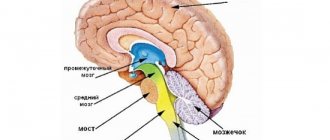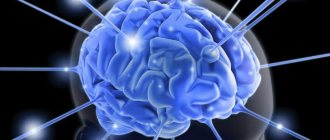Liquor is the cerebrospinal fluid that fills and washes the anatomical spaces of the brain and spinal cord. It carries the most important functions of protecting these organs from damage and shock, helps maintain the constancy of liquid media, and maintains intracranial pressure. In addition, it is involved in the release of brain metabolites and the transport of nutrients. Analysis of cerebrospinal fluid helps to identify pathologies of the central nervous system, their degree and development, since cerebrospinal fluid immediately reacts by changing parameters to any changes in the brain.
Indications for use
A study of cerebrospinal fluid is carried out when:
- the appearance of a risk of hemorrhage in the brain cavity;
- infections that affect the central nervous system and lead to inflammation of the membranes (meningitis, encephalitis, meningoencephalitis);
- malignant formations in the meninges;
- there is a suspicion of liquorrhea (loss of cerebrospinal fluid), the main cause of which is a violation of the integrity of the hard membranes of the brain.
The above indications are absolute, i.e. requiring mandatory analysis of the cerebrospinal fluid. The study can also be chosen as a diagnostic tool in other situations. Such relative indications may include:
- diseases caused by demyelination, i.e. destruction of the myelin sheath of neurons, in which the conductivity of nerve impulses deteriorates and various abnormalities occur (for example, multiple sclerosis);
- autoimmune diseases;
- blockage of blood vessels by pathogenic organisms (septic embolism);
- the child has a fever of unknown origin;
- systemic lesions of peripheral nerves (polyneuropathy) caused by inflammatory reactions.
In some cases, cerebrospinal fluid analysis is contraindicated, for example, in case of a large tumor, greatly increased cranial pressure, or edema.
The procedure is prescribed with caution in cases of bleeding disorders (due to the risk of bleeding) or thrombocytopenia (a decrease in the number of platelets, accompanied by bleeding).
Analysis and research of cerebrospinal fluid
The study of cerebral spinal puncture is a method that is used to identify and diagnose various disorders of the brain structures and membranes, the central nervous system. Such pathologies include:
- meningitis, tuberculous meningitis;
- inflammatory processes in the membrane;
- tumor formations;
- encephalitis;
- syphilis.
Carrying out the procedure for analyzing and studying SM fluid requires taking a sample as a punctate from the lumbar spinal cord. The collection is made through a small puncture in the desired area of the spine.
A complete analysis of CSF includes macroscopic and microscopic examination, as well as cytology, biochemistry, bacterioscopy and bacterial culture on a nutrient medium.
The spinal tap will be examined according to several parameters:
- Transparency.
The liquor of a healthy person is absolutely transparent, like pure water, so during macroscopic analysis it is compared with a standard - distilled, highly purified water in good lighting. If the sample taken is not clear enough or there is a strong, obvious cloudiness, then there is a reason to look for the disease. After detecting a discrepancy with the standard, the test tube is sent to a centrifuge - the procedure will determine the nature of the turbidity:
- If the sample is still cloudy after centrifugation, this indicates bacterial contamination.
- If the sediment sank to the bottom of the flask, then the turbidity was caused by blood cells or other cells.
- Color.
Liquor produced by a healthy body should be absolutely colorless. The change indicates the presence of any compounds in it that normally should not be there - many pathological conditions of the body are provoked by xanthochromia of the CSF, that is, its coloring in shades of red and orange. Xanthochromia is caused by the presence of hemoglobin and its species in the sample, for example:
- yellowishness - the presence of bilirubin fraction, released during the breakdown of hemoglobin;
- light pink, red-pink shading indicates oxyhemoglobin (hemoglobin saturated with oxygen) in the cerebrospinal fluid;
- orange shades – the sample contains bilirubin compounds that appear as a result of the breakdown of oxyhemoglobin;
- brown colors - reflect the presence of methemoglobin (an oxidized form of hemoglobin) - this condition is observed in tumor phenomena, strokes;
- cloudy green, olive - the presence of pus during purulent meningitis or after opening an abscess.
- redness reflects the presence of blood.
If a little ichor gets into the sample during punctate collection, then such a mixture is considered a “travel” and does not affect the result of macroscopic analysis. Such an admixture is not observed throughout the entire volume of the punctate, but only on top. Impurities can be pale pink, cloudy pink or grayish pink.
The xtanochromic intensity of the sample is assessed according to the “pluses” set by the laboratory assistant during visual assessment:
- first degree (weak).
- second degree (moderate).
- third degree (strong).
- fourth degree (excessive).
Blood fractions or strong saturation of the punctate suggest one of the diagnoses: rupture of aneurysm vessels and subsequent intracranial hemorrhage, hemorrhagic encephalitis or stroke, moderate and severe TBI, hemorrhage in the brain tissue.
- Cytology.
The state of the cerebrospinal fluid of a healthy person allows for a slight content of cells, but within the established values.
Leukocytes in one cubic mm:
- up to 6 units (in adults);
- up to 8-10 units (in children);
- up to 20 units (in infants and toddlers up to 10 months).
There should be no plasma cells. The presence indicates infectious diseases of the central nervous system: multiple sclerosis, encephalitis, meningitis or recovery after surgery with a wound that did not heal for a long time.
Monocytes are observed in numbers up to 2 per cubic mm. If the number increases, then this is a reason to suspect a chronic pathology of the central nervous system: ischemia, neurosyphilis, tuberculosis.
The neutrophil component is present only during inflammatory processes, altered forms are present during recovery from inflammation.
Granular macrophage cells can only be present in the CSF when the body's brain tissue is disintegrating, as in the case of a tumor. Epithelial cells enter the punctate only if a tumor of the central nervous system develops.
Methods for studying cerebrospinal fluid
Cerebrospinal fluid is collected in several test tubes, since the technique for studying cerebrospinal fluid involves conducting tests:
- clinical (external and internal);
- biochemical;
- bacteriological.
External analysis involves studying the type of cerebrospinal fluid, its color, transparency, and the presence of a fibrinous film, which is formed at a high concentration of the fibrinogen protein, which is responsible for blood clotting.
During microscopic (internal) examination, the cellular composition is analyzed. Normally, only monocytes and lymphocytes are present in the cerebrospinal fluid; in pathologies, other cells appear. Their number per unit volume is determined and differentiation is carried out.
Biochemical analysis evaluates the acidity of the cerebrospinal fluid, its relative density, the presence of protein, and the PH level. The concentration of glucose, the amount and proportions of lactate (lactic acid) and pyruvate (pyruvic acid) are also determined. This helps in the diagnosis of CNS infections - viral and bacterial, and may also indicate a cerebrovascular accident.
The bacteriological method of studying cerebrospinal fluid helps to identify pathogens such as pneumococcus, meningococcus, Haemophilus influenzae, and tuberculosis bacilli. It involves taking a smear, isolating and identifying the harmful agent with the determination of antigens.
Liquor. Laboratory diagnostics
For a standard study, cerebrospinal fluid is taken into three tubes: for general, biochemical and microbiological analyses.
Standard clinical analysis of cerebrospinal fluid includes assessment of density, pH, color and transparency of cerebrospinal fluid before and after centrifugation, assessment of total cytosis (normally no more than 5 cells per 1 μl), and determination of protein content. Normal cerebrospinal fluid is colorless. In appearance, it does not differ from water, so its color is determined by comparison with distilled water poured into a test tube of the same diameter. Clarity is determined by comparison with distilled water. Normally, cerebrospinal fluid is clear. The relative density of cerebrospinal fluid is normally 1.005-1.008. Normal pH is 7.35-7.8. Quantitative and qualitative studies of protein in the liquor are carried out. The protein content normally does not exceed 0.45 g/l. If necessary, protein fractions are examined. In a biochemical analysis of the cerebrospinal fluid, the content of glucose (normally within the range of 2.2-3.9 mmol/l), lactate (normally within the range of 1.1-2.4 mmol/l) is assessed. The determination of chlorides and other electrolytes can be carried out by various methods (titration or on an electrolyte analyzer).
Bacterioscopic research methods are used. Bacterial cells detected during bacterioscopy must be identified. In a microbiological laboratory, you can stain a smear or sediment of the cerebrospinal fluid, depending on the expected etiology of the pathogen: with Gram stain - if a bacterial infection is suspected, for acid-fast microorganisms - if tuberculosis is suspected, with India ink - if a fungal infection is suspected. CSF cultures are carried out on special media, including media that absorb antibiotics (in the case of massive antibiotic therapy). There are a large number of tests to identify specific diseases, for example, the Wasserman reaction, RIF and RIBT to exclude neurosyphilis, tests for various antigens for typing tumor antigens, determination of antibodies to various viruses, etc. During bacteriological examination, meningococci, pneumococci, Haemophilus influenzae can be identified , streptococci, staphylococci, listeria, mycobacterium tuberculosis. Bacteriological studies of cerebrospinal fluid are aimed at identifying the causative agents of various infections: coccal group (meningo-, pneumo-, staphylo- and streptococci) for meningitis and brain abscesses, treponema pallidum - for neurosyphilis, Mycobacterium tuberculosis - for tuberculous meningitis, toxoplasma - for toxoplasmosis, cysticercus vesicles - with cysticercosis.
Virological studies of cerebrospinal fluid are aimed at establishing the viral etiology of the disease.
In recent years, certain prospects in the etiological diagnosis of neuroinfections have been associated with the development of molecular genetic technologies for detecting nucleic acids of pathogens of infectious diseases in the cerebrospinal fluid (PCR diagnostics).
Preparing for the examination
Preparation for cerebrospinal fluid analysis is as follows:
- Blood tests are taken (general, clotting tests).
- At the preliminary consultation, an anamnesis is collected. The patient needs to inform the doctor about past illnesses, the presence of chronic illnesses, and negative reactions to medications.
- It is necessary to donate cerebrospinal fluid on an empty stomach - eating is prohibited 12 hours before the procedure.
Before the examination, taking medications that thin the blood, as well as analgesics and non-steroidal anti-inflammatory drugs is not allowed.
Analysis process
Typically, cerebrospinal fluid is obtained using a lumbar puncture to obtain a sample. Sometimes it is necessary to do a ventricular (ventricular) or suboccipital (occipital) puncture, but this is not common. The price of the procedure varies depending on the type of fluid taken; the cost also varies depending on the location and complexity of the study.
A sequential description of the procedure, which lasts on average 40-50 minutes, is as follows:
- The patient takes a horizontal position and pulls his legs to his stomach and his head to his chest (during lumbar puncture). In other types - lying or sitting.
- The desired area is treated with iodine and alcohol.
- For pain relief, novocaine is injected into the puncture area.
- The needle passes between the 3rd and 4th or 5th and 6th vertebrae (for lumbar puncture), between the temporal, parietal and frontal bones (for ventricular puncture), between the second cervical vertebra and the occipital bone (for occipital puncture).
- CSF is collected. By the way the liquid flows out, deviations can be judged. Normally, it is released in drops, but with an increase in intracranial pressure it runs rapidly. A pressure gauge is used to determine pressure.
- The needle is removed and the puncture area is covered with a sterile napkin.
- The patient is prescribed bed rest for a day.
The resulting liquor must be immediately delivered to the laboratory.










